On visiting Kenfig Nature Reserve I was excited at having photographed what I thought was either a Dark Green or High Brown Fritillary. These large and powerful butterflies can be seen flying rapidly in a range of open sunny habitats. The Dark Green Fritillary males look similar to the High Brown Fritillary, which is far rarer but sometimes flies with them on Bracken-covered hillsides.
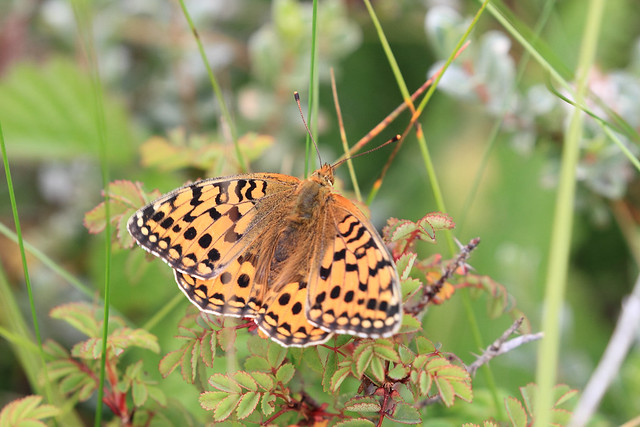
Can you tell whether this is a Dark Green or High Brown Frittilary?
Canon EOS 7D – EF/100-400mm f4.5-5.6L IS II USM
f8.0 / 400mm/ 1/160 / ISO 400
Not far from Kenfig is the Alun Valley in the Vale of Glamorgan and this supports what is thought to be the last population in Wales of the High Brown Fritillary. Two other species of fritillary are also found there: Dark Green and Small Pearl-bordered.
In 1999 the population of the High Brown Fritillaries in the Alun Valley had declined to a dangerous low. The good news is that since 2003, Butterfly Conservation on behalf of the Vale Biodiversity Partnership has undertaken a habitat management and restoration programme. With the help of the Glamorgan Heritage Coast project and a dedicated team of volunteers, scrub clearance and coppicing has taken place every winter since 2003 to try to restore breeding habitat. Since all this work work began, the High Brown Fritillary has undergone population increases each year and has appeared on all the managed patches. Could it be that the High Brown Frittilary has also managed to form other colony/ies within the nearby Kenfig Nature Reserve?
Before I get too excited, I need to have a good look at my field guide and compare features of Dark Green and High Brown to hopefully establish the species. This is not straightforward as it is much more difficult to distinguish the Dark Green Fritillary from the High Brown Fritillary based on their uppersides. However, the first row of dots from the outside edge of the forewing upperside do give a clue – the 3rd dot from the apex of the forewing is in line with the other dots in the Dark Green Fritillary, but indented toward the body in the High Brown Fritillary.
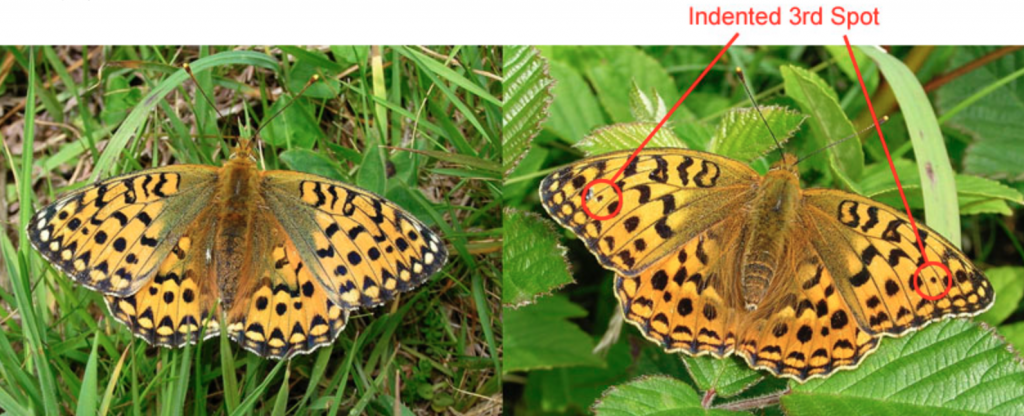
left side – Dark Green Fritillary / right side – High Brown Fritillary
With grateful acknowledgement to UK Butterflies – © ukbutterflies.co.uk
As the third spot is in-line with the other adjacent spots I can be pretty confident that this butterfly is a Dark Green Fritillary. I’m a little disappointed as the High Brown is much rarer and I’ve yet to photograph one. Nevertheless, I’m pleased to have captured what appears to be a male Dark Green in pristine condition, having probably not long ago emerged.
This is a very challenging butterfly to photograph. It is easily spooked and is a very strong flyer, so almost impossible to follow. Instead of using my usual 150mm macro I used a Canon EF/100-400mm lens. To get a comparable shot with a macro lens would probably have resulted in scaring off this very timid butterfly. However, at 300/400mm and 3 feet away there was less chance of this happening resulting in a very nice capture of this beautiful butterfly.
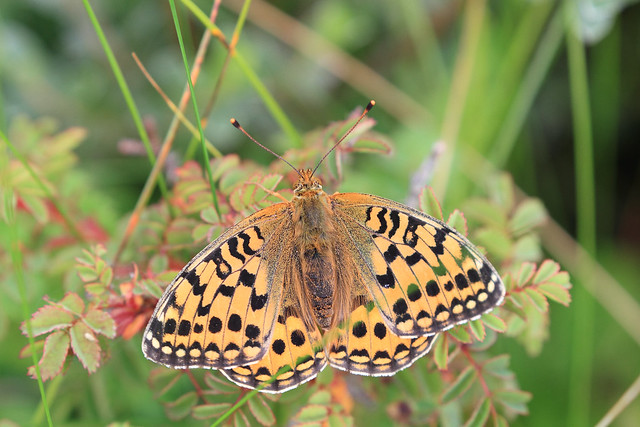
A spectacular and fast flying butterfly typical of downland and coastal dunes.
Canon EOS 7D – EF/100-400mm f4.5-5.6L IS II USM
f8.0 / 300mm/ 1/160 / ISO 400
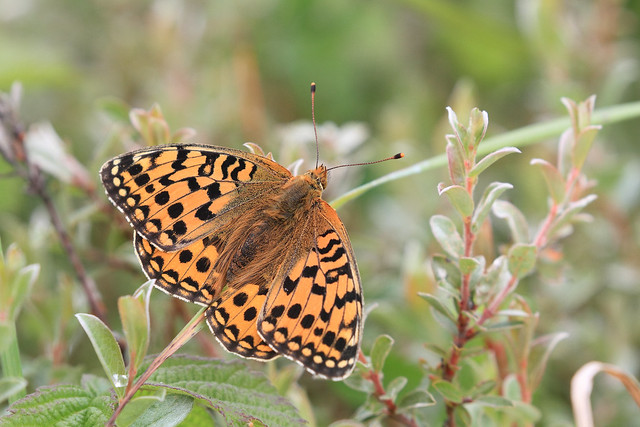
It favours open country and is larger, more powerful butterfly than all our other fritillaries except the woodland-preferring Silver-washed Fritillary.
Canon EOS 7D – EF/100-400mm f4.5-5.6L IS II USM
f8.0 / 400mm/ 1/125 / ISO 400

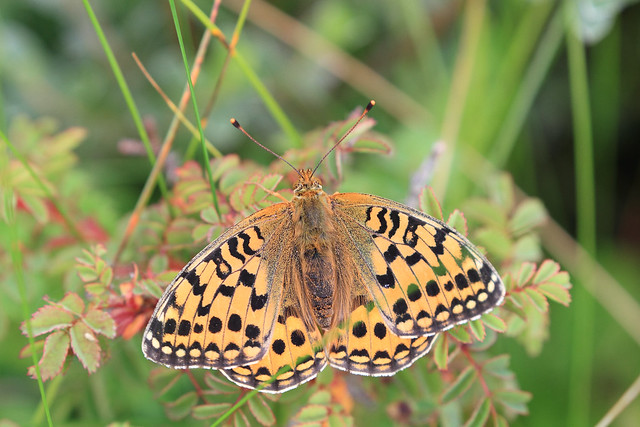
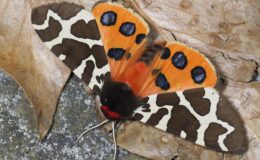
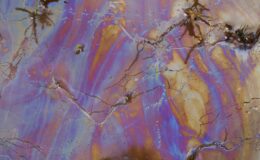
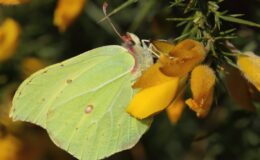
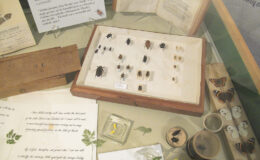
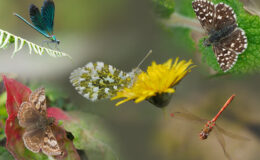
Leave a Comment